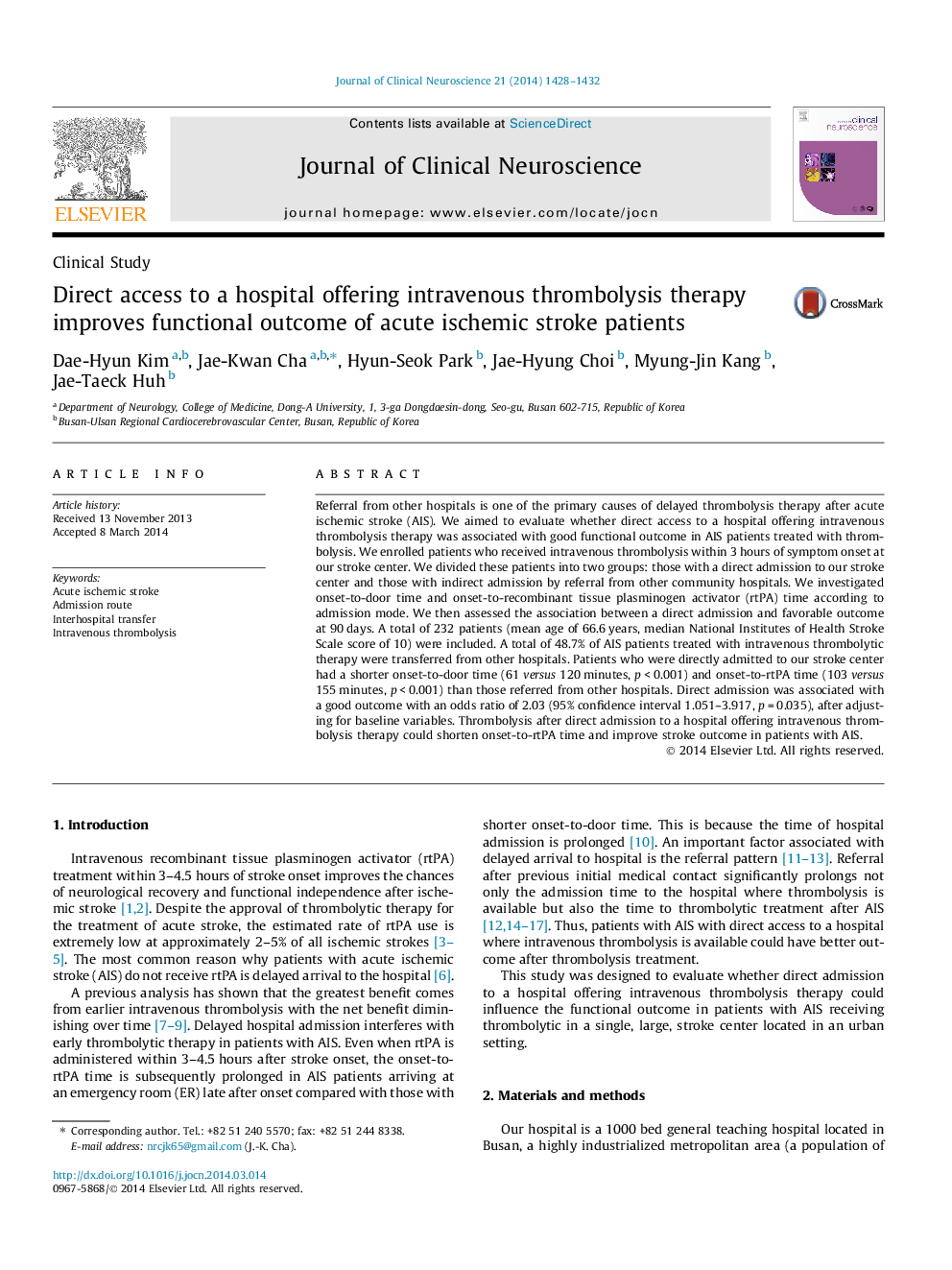| Article ID | Journal | Published Year | Pages | File Type |
|---|---|---|---|---|
| 6019869 | Journal of Clinical Neuroscience | 2014 | 5 Pages |
Abstract
Referral from other hospitals is one of the primary causes of delayed thrombolysis therapy after acute ischemic stroke (AIS). We aimed to evaluate whether direct access to a hospital offering intravenous thrombolysis therapy was associated with good functional outcome in AIS patients treated with thrombolysis. We enrolled patients who received intravenous thrombolysis within 3 hours of symptom onset at our stroke center. We divided these patients into two groups: those with a direct admission to our stroke center and those with indirect admission by referral from other community hospitals. We investigated onset-to-door time and onset-to-recombinant tissue plasminogen activator (rtPA) time according to admission mode. We then assessed the association between a direct admission and favorable outcome at 90 days. A total of 232 patients (mean age of 66.6 years, median National Institutes of Health Stroke Scale score of 10) were included. A total of 48.7% of AIS patients treated with intravenous thrombolytic therapy were transferred from other hospitals. Patients who were directly admitted to our stroke center had a shorter onset-to-door time (61 versus 120 minutes, p < 0.001) and onset-to-rtPA time (103 versus 155 minutes, p < 0.001) than those referred from other hospitals. Direct admission was associated with a good outcome with an odds ratio of 2.03 (95% confidence interval 1.051-3.917, p = 0.035), after adjusting for baseline variables. Thrombolysis after direct admission to a hospital offering intravenous thrombolysis therapy could shorten onset-to-rtPA time and improve stroke outcome in patients with AIS.
Related Topics
Life Sciences
Neuroscience
Neurology
Authors
Dae-Hyun Kim, Jae-Kwan Cha, Hyun-Seok Park, Jae-Hyung Choi, Myung-Jin Kang, Jae-Taeck Huh,
